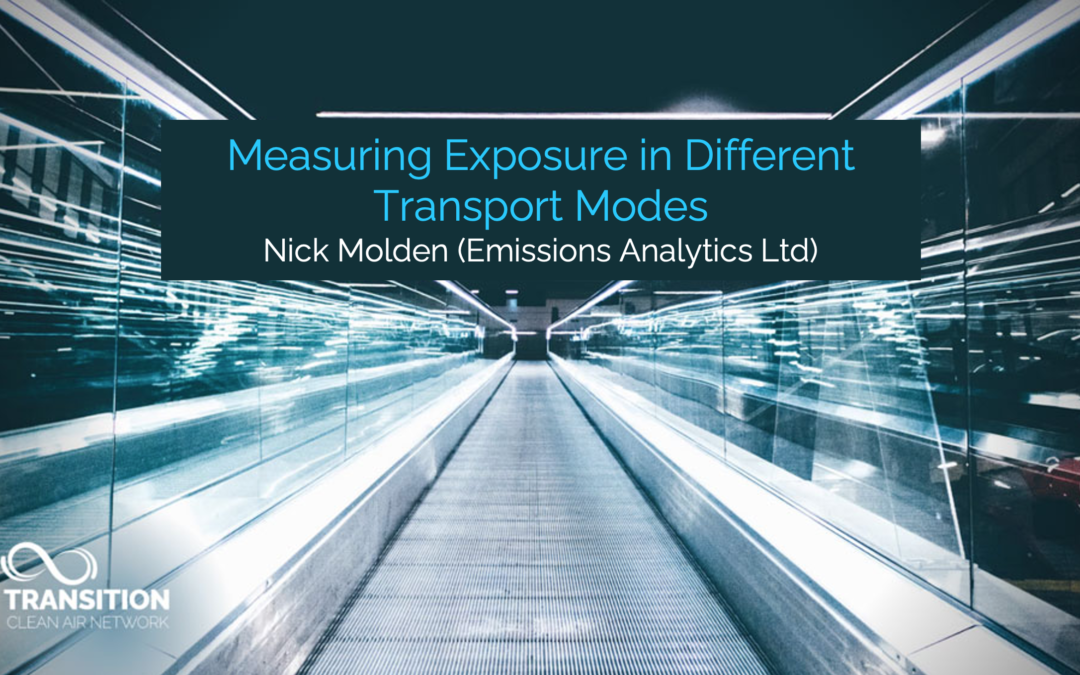Mid-term Summit showcasing TRANSITION-funded Clean Air Discovery & Innovation projects:
-
Measuring Exposure in Different Transport Modes | Nick Molden (Emissions Analytics Ltd)
-
Characterising Changing Travel Patterns in the COVID-19 Era | Dr Fiona Crawford (University of the West of England)
-
Progressing Real-Time Source Identification | Gordon Allison (DustScan Ltd)
-
Minimising Public Exposure at the Roadside | Dr Fabrizio Bonatesta (Oxford Brookes University)
Measuring Exposure in Different Transport Modes | Nick Molden (Emissions Analytics Ltd)
Focussing on ultrafine particles and currently unregulated pollutants, Emissions Analytics Ltd will measure differential exposure when opting to walk, cycle, drive*, catch a bus* or travel by train* (*comparing diesel and electric variants) on a commuter journey between Oxford and London.
The harm caused by emissions from vehicles to air quality and the health of humans outside is increasingly well understood. It is generally accepted that it is a policy priority to remove high- emitting vehicles from the road and to swap these for low-emission vehicles or public transport. What is less well understood is the exposure of the occupants in various transportation modes. Aggregate time spent in vehicles is significant, and can be measured in hours per day for certain commuters and professional drivers. Our hypothesis is that greater policy attention should be paid to the interior air quality and ventilation of vehicles.
Existing research by Emissions Analytics shows that the worst-performing cars can have particle number concentrations – more than three times that in the ambient air. In broad terms, public awareness of exposure to health dangers has increased due to COVID-19. The focus of this project will be on particulates and volatile organic compounds (VOCs). Particles measured will include ultrafine particles, and VOCs will be analysed so as to identify their component species, using highly sensitive equipment. Therefore, a much wider range of pollutants will be tested than in standard air quality monitoring. With Net Zero, particles are likely to be the dominant traffic pollutant.
The modes of transport that will be studied include diesel and electric trains, the London Underground, diesel and electric buses, and old and new cars, including a battery electric vehicle. As a baseline and reference, the exposures of pedestrians and cyclist to pollutants will also be measured. The main output will be average “factors” describing typical exposures by transport mode.

